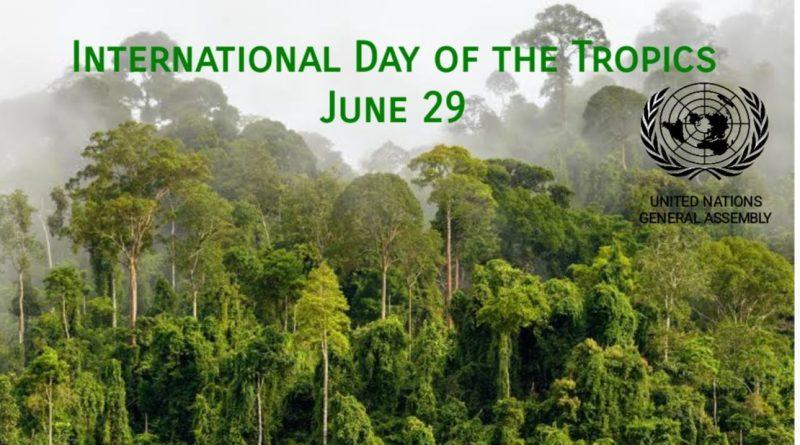International Day of the Tropics 2023: Celebrate the extraordinary diversity of the tropics
Every year on June 29, people celebrate International Day of the Tropics, #InternationalDayOfTheTropics. Its goal is to appreciate the tremendous diversity of the tropics while illuminating the unique opportunities and problems that these regions face. Its main objective is to highlight the significance of tropical regions in our lives and to increase awareness of the problems that tropical regions face throughout the world.
The day highlights the great diversity of the tropics. The sharing of tropical knowledge and stories, as well as the acknowledgment of the country’s rich cultural diversity and potential, are also made possible by this.
The Tropics are the areas of the Earth that are located in its center. 36% of the landmass of the planet is in the Tropics. The Equator and portions of North and South America, Africa, Asia, and Australia are all included in it. The climate here is pleasant all year round. The Tropics have a temperature range of 77 to 82 degrees Fahrenheit. The rainy season and dry season are the only seasons in the Tropics, which receive a lot of sunlight.
The Amazon Basin, one region of the Tropics, receives almost 9 feet of rain annually. The Sahara Desert, for example, only receives 2 to 10 cm of rain annually. Which plants and animals thrive where in the Tropics depends on the variation in precipitation. The Tropics are significant because of how many goods are exported from these areas. Also, the tropical region is home to over 40% of the world’s population.
Do You Know?
Nearly 99% of mangrove species and nearly 95% of the world’s mangrove forests are found in the Tropics.
Despite having 54% of the world’s renewable water resources, the Tropics’ population is approximately 50% vulnerable to water stress.
The Tropics have higher levels of biodiversity, but they also experience higher rates of biodiversity loss than the rest of the globe.
Biodiversity
While the Tropics have higher biodiversity than the rest of the planet, they are also experiencing higher biodiversity loss. An element of this biodiversity loss can be ascribed to human activity, including: destruction of maritime ecosystems and forests overuse of commercial hunters and industrial fishing fleets disease transmission and invasive species the expanding effects of climate change Numerous plant and animal species in the Tropics are in danger of losing their habitats as a result of these problems. They run the risk of going extinct as well. The obstacles facing tropical humans are numerous. The Tropics are the region of the world where the greatest number of people are undernourished. The higher levels of poverty in these areas are consistent with this. Additionally, the Tropics have more slum dwellers than the rest of the globe combined.
WHAT TO DO TO OBSERVE WORLD tropical day
Conservation organizations and organizations that care about the Tropics perform educational seminars, workshops, and lectures on this day. To take part:
Learn more about the dangers that the Tropics confront.
Make a donation to a charity like the Amazon Conservation Association.
See the television miniseries “Earth’s Tropical Islands.”
Put “travel to a tropical location” on your wish list.
Use the hashtag #InternationalDayOfTheTropics to post your favorite tropical photo on social media.




